Q.850
NetCause |
Beschreibung |
0 |
Nicht
definiert |
1 |
Unallocated (unassigned) numberCheck
number, redial
This cause indicates that the called party cannot be reached
recluses although the called party number is in a valid format.
It is not currently allocated (assigned). |
2 | No route to specified transit network
(national use) /Prefix 0 dialed in error
This cause indicates that the equipment sending this cause has
received a request to route the call through a particular
transit network which it does not recognize. The equipment
sending this cause does not recognize the transit network either
because the transit network does not exist or because that
particular transit network. While it does exist. does not serve
the equipment which is sending this cause. |
3 | No route to destination/Prefix 1 dialed in
error
This cause indicates that the called party cannot be reached
because the network through which the call has been routed does
not serve the destination desired. This cause is supported on a
network dependent basis. |
4 | send special information tone
This cause indicates that the called party cannot be reached für reasons that are of a long term nature and that the special
information tone should be returned to the calling party. |
5 | misdialed trunk prefix (national use)
This cause indicates the erroneous inclusion of a trunk prefix
in the called party number. This number is to sniped from the
dialed number being sent to the network by the customer Premisess
equipment. |
6 | channel unacceptable
This cause indicates that the channel most recently identified
is not acceptable to the sending entity für use in this call. |
7 | call awarded. being delivered in an established
channel
This cause indicates that the User has been awarded the incoming
call and that the incoming call is being connected to a channel
already established to that User für similar calls (e.g.
packet-mode x.25 virtual calls). |
8 | Call is proceeding/Preemption
This cause indicates the call is being preempted. |
9 | preemption
circuit reserved für reuse
This cause indicates that the call is being preempted and the
circuit is reserved für reuse by the preempting exchange. |
10 | normal call clearing
This cause indicates that the call is being cleared because one
of the Users involved in the call has requested that the call be
cleared. Under normal situations, the source of this cause is
not the network. |
14 | Excess digits received, call is proceeding
More digits were dialed than expected. Called number has been
truncated to the expected number. |
16 | Far end disconnect (Normal call clearing)
This cause indicates that the call is being cleared because one
of the Users involved in the call has requested that the call be
cleared. Under normal situations, the source of this cause is
not the network |
17 | User busy
This cause is used to indicate that the called party is unable
to accept another call because the User busy condition has been
encountered. This cause value may be generated by the called User or by the network. In the case of User determined User busy
it is noted that the User equipment is compatible with the call. |
18 | no User responding
This cause is used when a called party does not respond to a
call establishment message with either an alerting or connect
indication within the prescribed period of time allocated. |
19 | no answer from User (User alerted)
This cause is used when the called party has been alerted but
does not respond with a connect indication within a prescribed
period of time.
Note: This cause is not necessarily generated
by Q.931 procedures but may be generated by internal network
timers. |
20 | subscriber absent
This cause value is used when a mobile station has logged off.
radio contact is not obtained with a mobile station or if a
personal telecommunication User is temporarily not addressable
at any User-network interface. |
21 | call rejected
This cause indicates that the equipment sending this cause does
not wish to accept this call. although it could have accepted
the call because the equipment sending this cause is neither
busy nor incompatible. This cause may also be generated by the
network, indicating that the call was cleared due to a
supplementary service constraint. The diagnostic field may
contain additional information about the supplementary service
and reason für rejection. |
22 | number changed
This cause is returned to a calling party when the called party
number indicated by the calling party is no longer assigned. The
new called party number may optionally be included in the
diagnostic field. If a network does not support this cause,
cause no. 1, unallocated (unassigned) number shall be used. |
26 | non-selected User clearing
This cause indicates that the User has not been awarded the
incoming call. |
27 | destination out of order
This cause indicates that the destination indicated by the User
cannot be reached because the interface to the destination is
not functioning correctly. The term "not functioning correctly"
indicates that a signal message was unable to be delivered to
the remote party; e.g., a physical layer or data link layer
failure at the remote party or User equipment off-line. |
28 | invalid number format (address incomplete)
This cause indicates that the called party cannot be reached
because the called party number is not in a valid format or is
not complete. |
29 | facilities rejected
This cause is returned when a supplementary service requested by
the User cannot be provide by the network. |
30 | response to STATUS INQUIRY
This cause is included in the STATUS message when the reason für generating the STATUS message was the prior receipt of a STATUS
INQUIRY. |
31 | normal. Unspecified
This cause is used to report a normal event only when no other
cause in the normal class applies. |
34 | no circuit/channel available
This cause indicates that there is no appropriate circuit/channel
presently available to handle the call. |
35 | Call Queued [Q.850] |
38 | network out of order
This cause indicates that the network is not functioning
correctly and that the condition is likely to last a relatively
long period of time e.g., immediately re-attempting the call is
not likely to be successful. |
39 | permanent frame mode connection out-of-service
This cause is included in a STATUS message to indicate that a
permanently established frame mode connection is out-of-service
(e.g. due to equipment or section failure) (see Annex A/Q.933) |
40 | permanent frame mode connection operational
This cause is included in a STATUS message to indicate that a
permanently established frame mode connection is operational and
capable of carrying User information. (see Annex A/Q.933] |
41 | temporary failure
This cause indicates that the network is not functioning
correctly and that the condition is no likely to last a long
period of time; e.g., the User may wish to try another call
attempt almost immediately. |
42 | switching equipment congestion
This cause indicates that the switching equipment generating
this cause is experiencing a period of high traffic. |
43 | access information discarded
This cause indicates that the network could not deliver access
information to the remote User as requested. i.e., User-to-User
information, low layer compatibility, high layer compatibility
or sub-address as indicated in the diagnostic. It is noted that
the particular type of access information discarded is
optionally included in the diagnostic. |
44 | requested circuit/channel not available
This cause is returned when the circuit or channel indicated by
the requesting entity cannot be provided by the other side of
the interface. |
46 | precedence call blocked
This cause indicates that there are no predictable circuits or
that the called User is busy with a call of equal or higher
preventable level. |
47 | resource unavailable, unspecified
This cause is used to report a resource unavailable event only
when no other cause in the resource unavailable class applies. |
49 | Quality of Service not available
This cause is used to report that the requested Quality of
Service. as defined in Recommendation X.213. cannot be provided
(e.g., throughput of transit delay cannot be supported). |
50 | requested facility not subscribed
This cause indicates that the User has requested a supplementary
service which is implemented by the equipment which generated
this cause but the User is not authorized to use. |
52 | outgoing calls barred
This cause indicates that because of call screening provided by
the network, the calling User is not permitted to make a call. |
53 | outgoing calls barred within CUG
This cause indicates that although the calling party is a member
of the CUG für the outgoing CUG call. Outgoing calls are not
allowed für this member of the CUG. |
54 | incoming calls barred
The User will not accept the call delivered in the SETUP message. |
55 | incoming calls barred within CUG
This cause indicates that although the calling party is a member
of the CUG für the incoming CUG call. Incoming calls are not
allowed für this member of the CUG. |
57 | bearer capability not authorized
This cause indicates that the User has requested a bearer
capability which is implemented by the equipment which generated
this cause but the User is not authorized to use. |
58 | bearer capability not presently available
This cause indicates that the User has requested a bearer
capability which is implemented by the equipment which generated
this cause but which is not available at this time. |
62 | inconsistency in outgoing information element.
This cause indicates an inconsistency in the designated outgoing
access information and subscriber class |
63 | service or option not available. Unspecified
This cause is used to report a service or option not available
event only when no other cause in the service or option not
available class applies. |
65 | bearer capability not implemented
This cause indicates that the equipment sending this cause does
not support the bearer capability requested. |
66 | channel type not implemented
This cause indicates that the equipment sending this cause does
not support the channel type requested |
69 | requested facility not implemented
This cause indicates that the equipment sending this cause does
not support the requested supplementary services. |
70 | only restricted digital information bearer
capability is available (national use)
This cause indicates that the calling party has requested an unrestricted bearer service but the equipment sending this cause
only supports the restricted version of the requested bearer
capability. |
79 | service or option not implemented unspecified
This cause is used to report a service or option not implemented
event only when no other cause in the service or option not
implemented class applies. |
81 | invalid call reference value
This cause indicates that the equipment sending this cause has
received a message with a call reference which is not currently
in use on the User-network interface. |
82 | identified channel does not exist
This cause indicates that the equipment sending this cause has
received a request to use a channel not activated on the
interface für a call. für example. if a User has subscribed to
those channels on a primäry rate interface numbered from l to 12
and the User equipment or the network attempts to use channels l
3 through 23, this cause is generated. |
83 | a suspended call exists, but this call identify
does not
This cause indicates that a call resume has been attempted with
a call identity which differs from that in use für any presently
suspended call(s). |
84 | call identity in use
This cause indicates that the network has received a call
suspended request containing a call identity (including the null
call identity) which is already in use für a suspended call
within the domain of interfaces over which the call might be
resumed. |
85 | no call suspended
This cause indicates that the network has received a call resume
request containing a Call identity information element which
presently does not indicate any suspended call within the domain
of interfaces over which calls may be resumed. |
86 | call having the requested call identity has been
cleared
This cause indicates that the network has received a call resume
request containing a Call identity information element
indicating a suspended call that has in the meantime been
cleared while suspended (either by network time-out or by the
remote User). |
87 | User not a member of CUG
This cause indicates that the called User für the incoming CUG
call is not a member of the specified CUG or that the calling User is an ordinary subscriber calling a CUG subscriber. |
88 | incompatible destination
This cause indicates that the equipment sending this cause has
received a request to establish a call which has low layer
compatibility. high layer compatibility or other compatibility
attributes (e.g., data rate) which cannot be accommodated. |
90 | non-existent CUG
This cause indicates that the specified CUG does not exist. |
91 | invalid transit network selection (national use)
This cause indicates that a transit network identification was
received which is of an incorrect format as defined in Annex
C/Q.931 |
95 | invalid message, unspecified
This cause is used to report an invalid message event only when
no other cause in the invalid message class applies. |
96 | mandatory information element is missing
This cause indicates that the equipment sending this cause has
received a message which is missing an information element which
must be present in the message before that message can be
processed. |
97 | message type non-existent or not implemented
This cause indicates that the equipment sending this cause has
received a message with a message type it does not recognize
either because this is a message not defined of defined but not
implemented by the equipment sending this cause. |
98 | message not compatible with call state or message
type non-existent or not implemented.
This cause indicates that the equipment sending this cause has
received a message such that the procedures do not indicate that
this is a permissible message to receive while in the call state.
or a STATUS message was received indicating an incompatible call
state. |
99 | Information element / parameter non-existent or
not implemented
This cause indicates that the equipment sending this cause has
received a message which includes information element(s)/parameter(s)
not recognized because the information element(s)/parameter name(s)
are not defined or are defined but not implemented by the
equipment sending the cause. This cause indicates that the
information element(s)/parameter(s) were discarded. However, the
information element is not required to be present in the message
in order für the equipment sending the cause to process the
message. |
100 | Invalid information element contents
This cause indicates that the equipment sending this cause has
received and information element which it has implemented;
however, one or more Gelds in the I.E. are coded in such a way
which has not been implemented by the equipment sending this
cause. |
101 | message not compatible with call state
This cause indicates that a message has been received which is
incompatible with the call state. |
102 | recovery on timer expiry
This cause indicates that a procedure has been initiated by the
expiration of a timer in association with error handling
procedures. |
103 | parameter non-existent or not implemented
- passed on (national use)
This cause indicates that the equipment sending this cause has
received a message which includes parameters not recognized
because the parameters are not defined or are defined but not
implemented by the equipment sending this cause. The cause
indicates that the parameter(s) were ignored. In addition, if
the equipment sending this cause is an intermediate point, then
this cause indicates that the parameter(s) were passed unchanged. |
110 | message with unrecognized parameter discarded
This cause indicates that the equipment sending this cause has
discarded a received message which includes a parameter that is
not recognized. |
111 | protocol error, unspecified
This cause is used to report a protocol error event only when no
other cause in the protocol error class applies.
|
127 | Intel-working, unspecified
This cause indicates that an interworking call (usually a call
to 5W56 service) has ended. |
